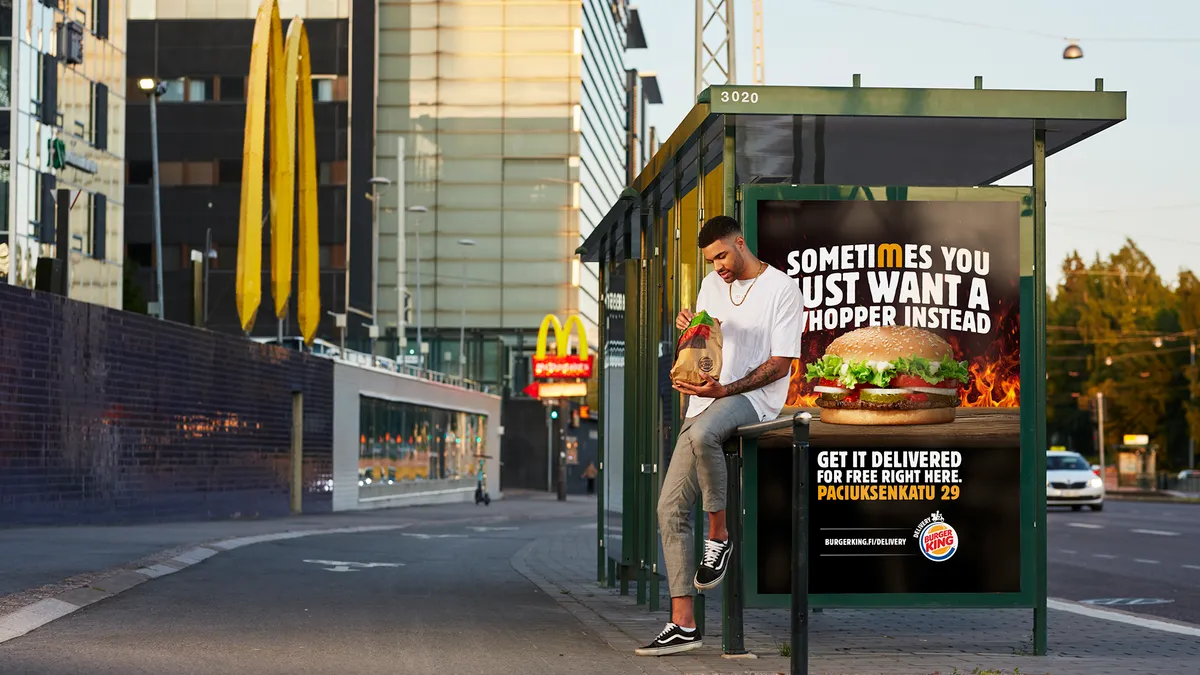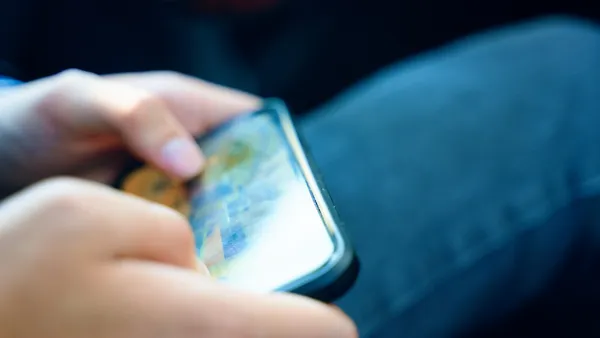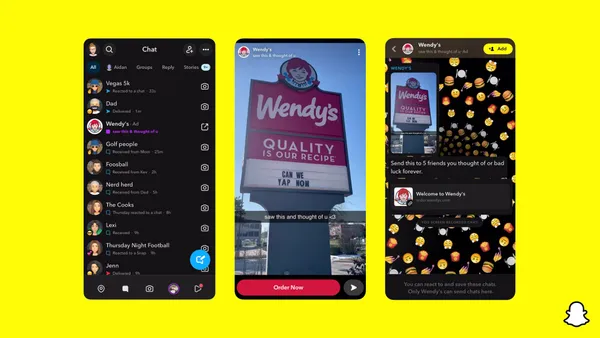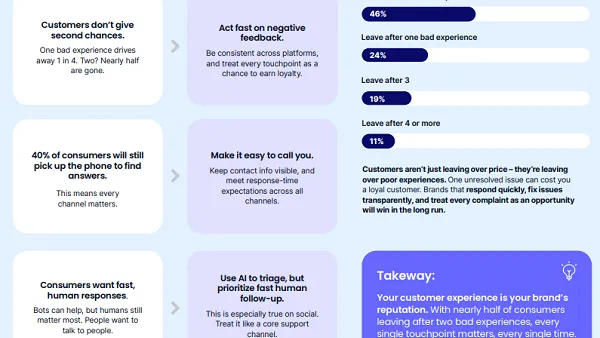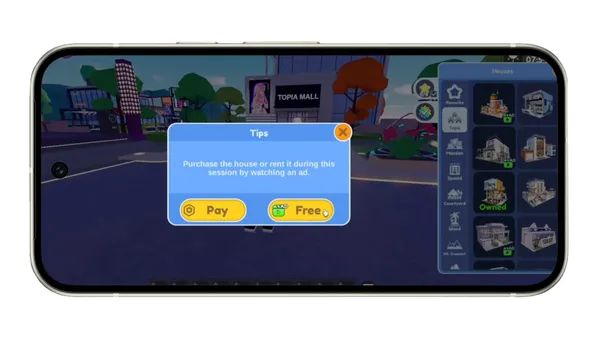Brief:
- Burger King Finland offered free delivery to Helsinki residents who ordered food near McDonald's, whose locations in the city outnumber Burger King, per an announcement shared with Mobile Marketer.
- The conquesting campaign featured out-of-home (OOH) advertising outside a few McDonald's restaurants that had the address for delivery from local food-delivery service Wolt.
- To promote the free delivery offer, Burger King enlisted Finnish micro influencers who shared their experiences with free delivery during the three-day promotion that ended on July 1.
Insight:
Burger King's conquesting campaign in Finland was the fast-food chain's latest effort to target McDonald's customers by using mobile technology. Burger King worked with Wolt, a food delivery company started in 2014, to set delivery hotspots near several McDonald's locations and publicized them with strategically placed OOH ads and an influencer campaign. The campaign showed how OOH advertising can work in tandem with a mobile app to reach a highly targeted group of customers.
Burger King Finland's campaign differed from the burger chain's conquesting efforts in other countries that used geolocation technology in smartphones to target McDonald's customers. Burger King Germany last year targeted McDonald's customers as part of a promotion timed with the release of horror movie "It Chapter Two." The campaign urged McDonald's customers to leave its restaurants and redeem a Burger King coupon for discounted food. The Burger King app showed a countdown clock and used location data to show the quickest route to its nearest restaurant.
Before that campaign, Burger King in 2018 boosted downloads of its mobile app by 1.5 million with its "Whopper Detour" stunt campaign that offered 1-cent Whoppers to smartphone users who were near rival McDonald's locations in the U.S. The campaign helped to boost the Burger King app to the most downloaded app in Apple's App Store for several days. It also was the most downloaded fast-food app in the U.S., where 70% of consumers use their mobile devices as part of their interactions with fast-food and fast-casual restaurants, per a survey commissioned by ad-tech firm AdTheorent.
Before the coronavirus pandemic, OOH advertising saw healthy growth as marketers combined their outdoor efforts with mobile campaigns to drive consumer actions such as foot traffic to nearby locations. Among the more recent examples, Outfront Media ran a campaign for Valentine's Day that urged commuters to scan heart-shaped QR codes on digital billboards to activate an augmented reality (AR) filter in Instagram Stories. Coca-Cola's Fanta soda brand last year ran a campaign that let Snapchat users point their smartphone at billboards, while McDonald's deployed an OOH promotion that included an integration with the same image-messaging app. The gradual easing of lockdowns may spur a rebirth of OOH campaigns as retailers and restaurants seek to drive store traffic.


